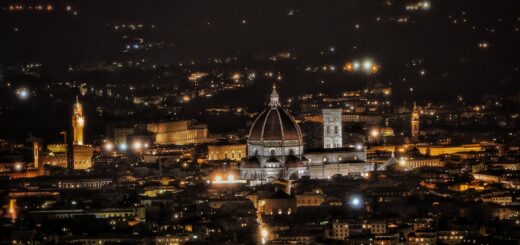The Impact of Psychedelic Art on Culture and Counterculture
In today’s fast-paced, globalized world, it can be hard to imagine a time when pop culture was synonymous with counterculture. However, in the psychedelic era of the 1960s and 1970s, radical ideas and groundbreaking artistic experimentation came together to create an entirely new cultural landscape. In this article, we will explore how psychedelic art¸ which includes visual art and music, not only influenced mainstream artistic movements, but also played a crucial role in defining the counterculture of its time.
Psychedelic art is characterized by its vivid colors, swirling patterns, and often mind-bending imagery. In many ways, it reflects the subjective experiences and altered states of consciousness that can be induced by psychedelic substances like LSD and psilocybin mushrooms. These substances were a catalyst for the growth of the counterculture movement in the 1960s, as they became increasingly popular among young people seeking spiritual experiences and new ways of understanding the world. As a result, the visual language of psychedelic art became closely associated with the counterculture movement itself.
One of the key aspects of psychedelic art is the emphasis on creativity and the breaking down of traditional artistic barriers. This can be seen both in the art world, with the rise of abstract expressionism and other avant-garde movements, and in the world of music, where artists like The Beatles, Jimi Hendrix, and Pink Floyd pushed the boundaries of experimentation and musical structure.
It’s important to recognize how psychedelic art and music played a role in shaping both popular culture and counterculture throughout the 1960s and 1970s. For example, the ‘Summer of Love’ in San Francisco’s Haight-Ashbury neighborhood in 1967 was largely fueled by the psychedelic music, art, and fashion of the time. The vibrant colors, swirling patterns, and surreal imagery associated with psychedelic art became synonymous with the peace, love, and personal growth message of the hippie movement, as artists and musicians sought to unite people in a collective spiritual experience that transcended the material world and challenged mainstream societal values.
However, the impact of psychedelic art wasn’t confined to the world of visual art and music; it also seeped into political, philosophical, and spiritual practices, as well as the very fabric of global culture. Many of the core beliefs and values of the counterculture movement were inextricably linked with the ideas popularized by psychedelic art, and the use of mind-altering substances often fueled a deeper engagement with issues like environmentalism, feminism, and anti-war activism.
As the counterculture movement continued to evolve, psychedelic art and music had a reciprocal relationship with social, political, and cultural change. For instance, the emergence of punk rock in the 1970s, with its emphasis on individualism, rebellion, and political dissent, was in many ways a reaction to the perceived excesses of the psychedelic era. In turn, punk rock provided a countercultural backdrop for the emergence of a new generation of artists who were influenced by psychedelia but sought to create their unique visual and musical language.
Even though the counterculture movement of the 1960s and 1970s has long since subsided, many of the ideas and values associated with it have left a lasting impact on modern culture. Most significantly, the widespread use of psychedelic substances for recreational and therapeutic purposes has contributed to an ongoing psychedelic renaissance, with growing interest in research on the potential benefits of these substances for mental health and well-being.
Furthermore, modern design and fashion trends have continued to draw on the visual language of psychedelic art, using vivid colors, elaborate patterns, and fantastical imagery to create visually striking and evocative pieces. Contemporary musicians, such as Tame Impala, and Animal Collective, also carry the torch of the psychedelic music tradition, incorporating elements of experimental, electronic, and psychedelic sounds into their work.
In conclusion, the impact of psychedelic art on both culture and counterculture cannot be overstated. Encompassing visual art, music, fashion, philosophy, and spiritual practices, psychedelic art played a central role in defining the counterculture movement of the 1960s and 1970s, leaving a lasting legacy on modern society. The creativity and barrier-breaking nature of psychedelic art continue to influence modern artistic expression, demonstrating the enduring power of this unique cultural phenomenon.


